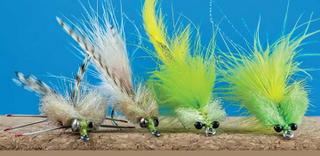The Tampa Bay Times
Fly reels in freshwater are generally thought of as a place to store fly line. It is rare that the backing is even seen. In saltwater, your first trip might include a large jack, snook or even ladyfish that will have you into the backing in seconds. Take some necessary steps to avoid any problems that can happen very quickly. Don’t knock the reel against rocks, boat decks, hard floors, etc. Small scratches and dents expose bare metal which will easily corrode. On a boat always place the rod butt (and reel) on a damp cloth, so it will not slide and scratch, or get a reel cover if not supplied with your reel. Flats boats have 6 or 8 horizontal rod holders under the gunnels that afford perfect protection for both rod and reel. Never drop the reel in the sand, especially when stringing your rod. When taking a picture in the water with your catch, avoid having your reel on the sandy bottom at your feet. Placing a reel in your hat if it must be on the ground is a good idea. Sand grains are very hard and can scratch the inner housing, causing damage to disk drags and even ball bearings. A ball bearing housing is made from stainless steel, the balls themselves are not. A corroded ball bearing will heat up and seize – in the middle of the fight with your fish of a lifetime. Immediately after fishing, rinse the reel with a soft freshwater spray or spigot. Remove the spool, shake off excess water, and leave it to dry before reassembling. Ideally, after a saltwater fishing trip, and before putting the reel away for a long period, give it an in-depth cleaning. Remove the fly line and backing, scrub carefully with hot soapy water to remove salt crystals, rinse and dry with a clean cloth. It is never a good idea to soak a fly reel for long periods. The freshwater will not dislodge salt trapped in the tightly wound backing. Water will also penetrate the ball bearings and cause rust. Soaking can also distort the cork drag plates and prevent the drag from working smoothly. Make sure your reel is designed to not use internal grease or lubricant. When applicable, apply new grease and lubricate according to the manufacturer’s instructions. Apply a light coating of oil to all exterior surfaces. Total reel maintenance will vary with use. Sending it to the manufacturer may be necessary if you can’t resolve a problem.
Fly fisherman Pat Damico charters in lower Tampa Bay and can be reached at captpatdamico.com and (727) 504-8649.
- Capiains Corner. Damico - December 26, 2023
- Pat Damico - December 21, 2023
- CaptainsCorner: Pat Damico - November 27, 2023











